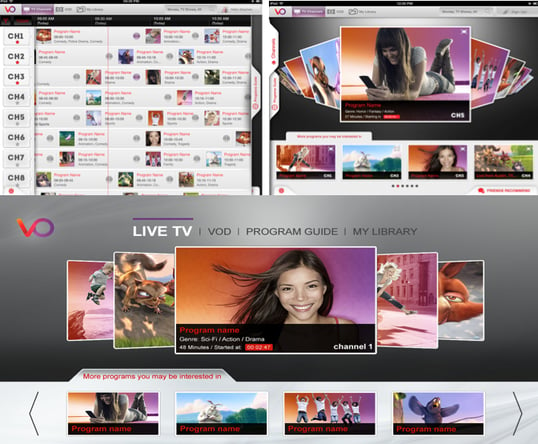
Have you ever asked yourself why anyone should care about user interface (UI) and user experience (UX) of a product or service? As long as it’s innovative, everything else should fall into place, right? Wrong!
Although seemingly similar, UX and UI are completely different - yet go hand-in-hand. The UI is the point of interaction, which provides a means by which to act. The UX is the interaction itself, which influences confidence and trust towards a product or service.
More Than Just a Pretty Face
For a better perspective, look at it this way; when you’re being interviewed for a job, you dress in a professional way: style your hair, and use make-up or choose a special tie, in order to look right for the job. The same would hold for a night out on the town - you want to look as attractive and desirable as possible in the hopes that you might meet someone interesting.
In both scenarios, your appearance can affect the first impression others have of you. But here’s the point: to make them interested in you, for a new job or for dating, it is important to be more than just a pretty face. The manner in which you interact, talk, and most of all, how others get to know you are essential to your success, both in professional and social settings.
The same is true with products and services. How people interact with televisions, websites, smartphones, apps, etc. go beyond appearance. It’s not enough for the interface with the user to look good, it must feel good.
Apple serves as a great example for this:
Apple’s latest release of the new iOS 7 has many people talking about User Interface (UI) and User Experience (UX). For the first time, the company significantly changed their iOS, both in design and usability, introducing a colorful and simple operation system to their iDevices. While not everyone is happy with the recent changes, app creators are working fast to adapt to the new look and feel of the iOS 7, redesigning their apps using similar simplicity and introducing new user interfaces.
“I Feel Good Nana Nana Nana Na”
That’s all very nice, but what does it mean for an interface to feel good? More importantly, how does it relate to content consumption? Just as with dating, what matters is the experience people have when interacting with products and services, including content.
In terms of content consumption, in recent years much has changed. With the introduction of multiple screens and new technologies, the desires and expectations of viewers have shifted. Now, more then ever, the competition for customers’ attention is huge, and they have the power to choose the winner. It is now more important than ever for content service providers to focus on delivering the best experience possible. Customers should be able to easily get what they want, when they want it and on the device of their choice.
As David Leporini, VO’s EVP of Marketing, Products and Security wrote in one of his latest posts “Customer acquisition may be obtained with sexy UI, however, customer retention, as well as engagement will eventually be driven by SUX.” He was referring to the Simple User eXperience (SUX) which is based on the idea that interfaces should be designed from the inside out, taking a holistic design approach. SUX is indeed all about considering outcomes from the very beginning of the design process, looking at all possible ways that a user can interact with an interface and how each one way affect their experience. Only by implementing a SUX approach, content service providers will be able to keep their subscribers engaged, happy and “feeling good.”
Everywhere to Everybody- Going Smart with TV
The “feel good” experience is enhanced when customers are quickly able to master the UI of regular TV services, and beyond with changing trends. As users want to be able to enjoy their content anywhere, anytime and on any device, the spotlight is now pointed to TV Everywhere(TVE) applications to deliver that expectation. When designing such apps, the main goal is to make the experience of accessing media and data as seamless as possible for ALL users. How can service providers do that when there are so many different users to consider? Should they create many different apps now, to meet the needs of every individual user?
Well, come on, why complicate things? The direction should be to create a single app, with a customizable UI for different users. For that, it’s necessary to first determine the unique needs of customers according to demographics, in order to better understand how and when they would use these apps.
A research conducted by VO for that purpose, identified three demographic ‘personas’ which represent primary segments of the population typically using TVE apps:
- Students: University students use these apps for enrichment, participating in discussions about video content, making content purchases, discovering what friends are watching, social networking and watching favorite programs in their free time. The programs of their choice are primarily fantasy movies, and shows like “Dexter,” “Game of Thrones,” ESPN and CNN Sports.
- Business Executives: Business executives enjoy watching programs on their various devices while traveling (particularly by air) to business meetings. They read reviews on popular series and post comments, in addition to keeping up to date with new and relevant items available for purchase. It is important for them to be able to record programs and download movies for viewing at a later time offline. Their favorite channels tend to be CNBC, National Geographic, CNN/Money, and the like.
- Active, middle-aged women: These women are typically involved in many activities while also tending to their children. They express interest in their children’s education and safety and enjoy watching romantic movies and dramas in their free time. They like to receive recommendations for content that would help them contribute to parental discussions and to be able to purchase the latest movies for their youngsters, as well as educational items for their teenagers. They also want to control their children’s viewing habits and to watch programs of their choice in their free time.
Considering the importance of UI and UX and with these three demographics in mind, VO’s designers and developers worked hard on designing a new UI for VO’s TV Everywhere apps, making it more visual, interactive, and user-friendly:

"To Infinity and Beyond!"
TVE apps are already a reality and a must-have feature for every operator. To make it right, though, it’s not enough just to impress subscribers with a sexy app. Users need to have a continued good experience while using the app to stay engaged.
We therefore see VO’s TVE apps as B2B2C. Of course, there are apps for content service providers, but they are totally created with the end user in mind from the word ‘go’. We take SUX very seriously!
UI and UX are concepts that will continue to exist and be relevant in many different fields long after the now-new iOS 7 is no longer a novelty. While there are many predictions of what the future holds for interfaces, technology keeps on evolving, changing users needs, desires and expectations along the way. And it’s up to teams of designers and developers, like VO’s, to keep on researching and evolving with them. As a very smart toy once say: To Infinity and Beyond!
Learn more about VO’s TV Everywhere solution.
“Does User Interface Really Matter?” Check out the Interactive Panel at MIPCube 2013, with Dr. Ofer Weintraub


